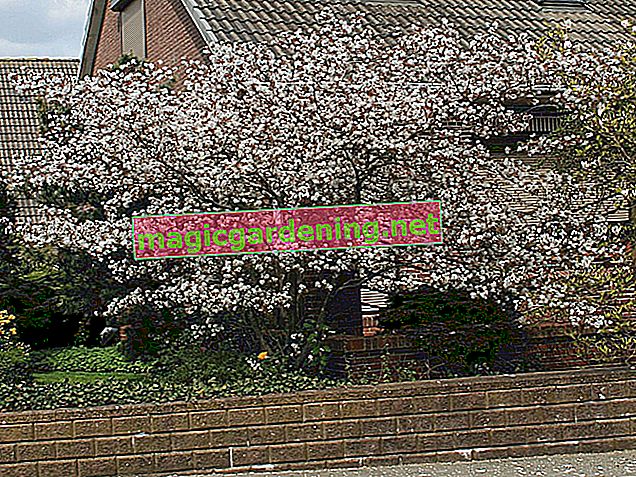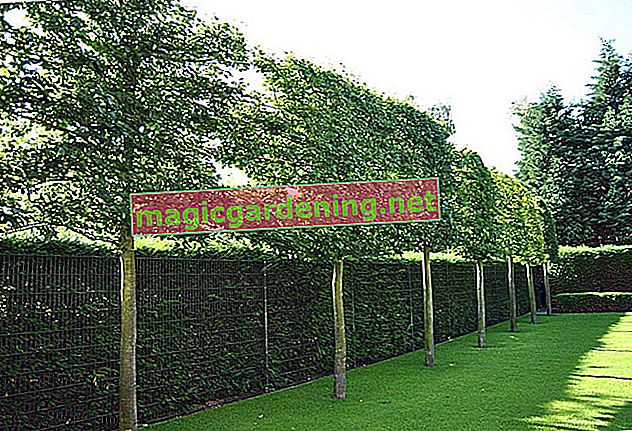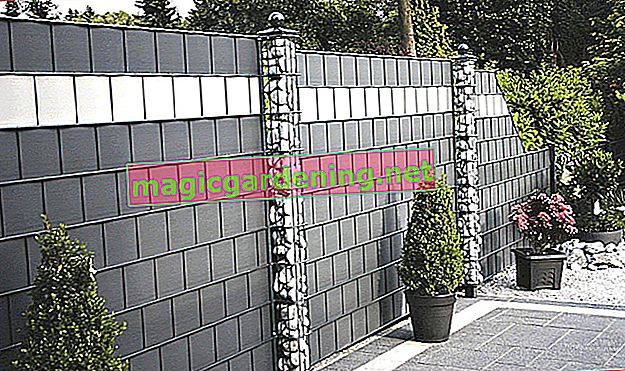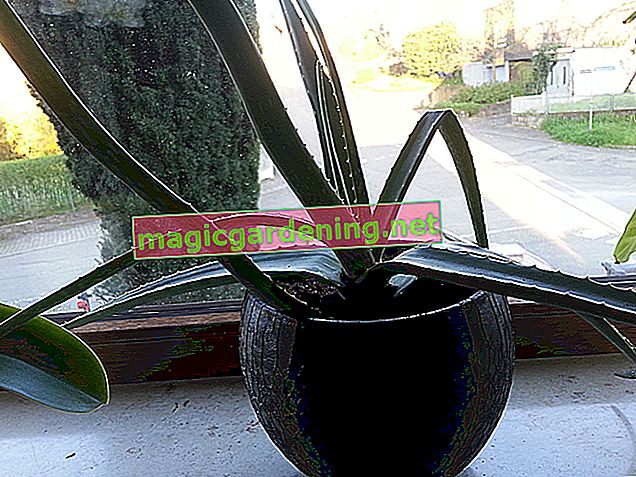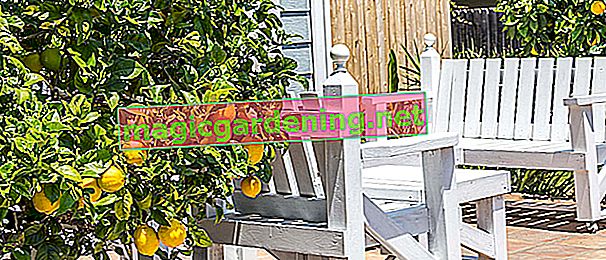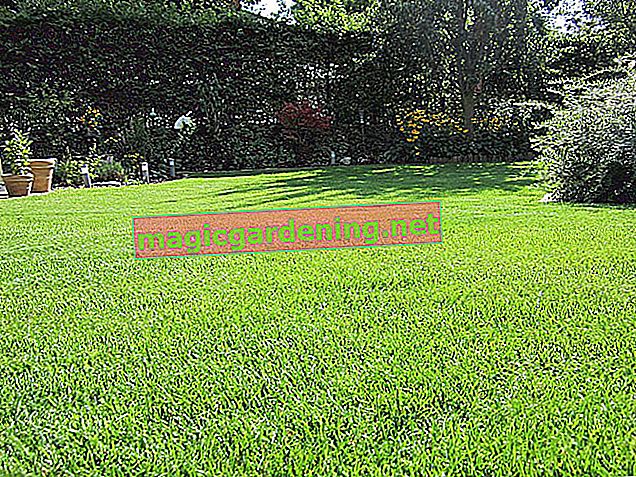
The best time
When is the best time to renew the lawn depends on whether you have to clear and dig the area beforehand or not. If a new plant without digging is sufficient, it is best to carry out the necessary work in the growing season between May and September. The project works best in spring or early autumn, as the area can regenerate best during this time. In the summer months, however, it is often too hot, which in turn leads to renewed damage, for example due to drought.
also read
- The lawn is gone: sow new plants or would you prefer turf?
- Which is better: rolling lawn or sowing it yourself?
- Remove or dig up old lawn?
If, on the other hand, the lawn has to be removed and dug up before re-sowing, you should carry out the preparatory activities in autumn if possible. Let the area lie fallow so that the frost crumbles the rough crumbs of the earth and refines the soil structure. You can also fold in compost, which decomposes over the winter and increases the humus content of the soil.
Preparation - step by step
It is not always enough to simply sow lawn seeds on an area or to lay turf and hope for the best. As the following article clearly shows, sometimes the area has to be completely removed, leveled and optimally prepared - in these cases it is imperative that you dig up, otherwise the project is doomed to failure from the outset.
video: Youtube
Removing the old lawn
Before digging, however, the area must first be cleared of old vegetation. For small areas, use a spade with which you can simply cut off the sod. Larger areas, on the other hand, can hardly be processed in this way, which is why the use of a tiller or tiller makes sense. Make sure not only to pull out the plants superficially, but also along with their roots. To make this easier, you can mow the area first before working - the less you have to rake off afterwards.
Let the torn out vegetation lie for a day, because dried-on plants are easier to remove than damp ones. Now take a simple garden rake and remove all plants with it. In the end, only the bare, chopped floor should be left.
Leveling and compacting the soil

Many new lawns to be laid out are characterized by unevenness. Over time, small mounds and holes have emerged which later make mowing and other work difficult. Therefore, it makes sense to straighten the surface so that it does not slope on either side. To do this, apply a mixture of soil and sand (mixing ratio 1: 1) to the future lawn area and distribute it with the help of a
- shovel
- Garden rake
- as well as cord and spirit level.
An exception are lawns located on slopes, because here the natural slope cannot be easily removed. Instead, just level out the bumps in the form of holes and bumps.
Then compact and smooth the surface, with a roller doing a good job. When this job is done, loosen the soil slightly again with the help of a rake. Now it is perfectly prepared for sowing the new lawn.
Digression
Which is why it is better not to work on wet ground
Do all the preparatory work on dry days. Not only is it more difficult to work on wet and heavy soil, you also destroy the small cavities and pores in the structure of the soil. These are immensely important for soil aeration and therefore also influence the later health of the lawn.Preparation without digging
"When re-seeding lawns, there is generally a higher need for fertilizer, especially nitrogen and potassium."

Such a complex renewal of the lawn is of course not necessary if the existing and otherwise healthy area only needs to be re-sown or repaired once. In such cases, instead of tearing everything up and digging it up, you can proceed as described in this section instead.
- Lawn mowing : Mow by setting as low as possible off the mower to the lowest level the lawn.
- Scarifying the lawn : Now remove the lawn thatch as well as moss and weeds with a motorized scarifier (€ 76.01 at Amazon *) or by hand with a rake, with which you thoroughly comb the lawn long and across.
- Liming and fertilizing : Liming. If necessary (preferably in early spring), fertilize the lawn and fertilize it after about four more weeks. A previous soil analysis shows you which measures make sense.
Tips
By scarifying you not only remove the thatch, but also combat weeds that form rosettes. These often adapt to a growth habit close to the ground by mowing, but are weakened in this way by the mechanical damage and can even disappear completely.
Renew the lawn
If the ground is prepared, the new lawn can now be sown. If you don't want to wait so long for the seeds to emerge by themselves, you can lay ready-made turf.
sowing
Special repair or regeneration mixtures are very suitable for carrying out repair work without digging up the ground beforehand. The grasses contained in it germinate quickly and ensure that the ground is covered quickly thanks to the pronounced clumping formation. These mixtures usually consist of different types of grass growing at different speeds and are specially tailored to the different types of lawn. While the rapidly germinating and growing varieties prevent weeds and other unwanted vegetation from settling, the slow-growing grasses complement the overall picture. On the packaging you will find printed area-related quantities, which are usually between 20 to 30 grams of lawn seed per square meter of surface.
The sowing is carried out as described:
- sow only on dry, windless days
- Mix the seeds vigorously
- Mix in sand or sawdust
- Divide the lawn into strips
- Spread the seeds broadly by hand
- First distribute lengthways and then crossways
- alternatively use a spreader
- then go over the surface with a roller
- Keep sowing moist
- Do not enter the lawn for the next few weeks
Grass seeds are light germs and should therefore not be pressed deeper than a maximum of 0.5 centimeters into the soil.
Turf

Rolled or ready-made turf has some advantages over sowing. Such a lawn offers a beautiful, dense sward immediately after laying, and this area is free of weeds and damaged areas. In addition, the area of the lawn can be loaded very quickly, after about two to three weeks. This saves up to three months in time compared to sowing. The turf is laid as described:
- Turf turf can be laid from a floor temperature of five degrees Celsius.
- The best time is early spring or autumn.
- Lay the turf staggered.
- Wear footboards when rolling out to protect the sod that has already been deployed.
- Lay the individual parts butt, i.e. without gaps.
- Fill in a mixture of sand and topsoil in any gaps that may arise.
- Start in a central location, such as along a path or the terrace.
- Lay long strips or rectangular pieces without cutting.
- Where you have to work with smaller fragments, work only at the end.
- Always lay turf from the bottom up on the slope.
- After laying it, roll the lawn to improve contact with the ground.
- Thoroughly water the area.
The lawn should be firmly established after about ten to 14 days. You can also mow for the first time at this point.
Digression
Pre-treated seeds protect against diseases
Some new seeds show the first signs of disease after a short time. Germination is slow, the turf remains patchy and root growth is sparse. A common reason is fungal emergence diseases that affect the young plants shortly after sowing. Pre-treated seeds with special bacteria, which are supposed to protect the seedlings from fungi and other pathogens, protect against these diseases.When and why is it necessary to renew the lawn?

There are many reasons why a lawn should be completely renewed and not just repaired or regenerated. An important point in answering this question is the size of the existing problem areas: If these are quite small and the rest of the lawn looks otherwise healthy, it is sufficient to mend them. However, if the problems lie in the turf base layer or in the subsoil and cannot be remedied despite intensive care, a complete renewal is often more useful. The same applies if the lawn shows massive signs of illness, such as an infection caused by fungi or bacteria. But even if your lawn is healthy and you always take good care of it, damage caused by animals may require a new plant. This is the case,if the lawn is destroyed by dog urine, wild boars have rummaged through the area in search of forage or moles or voles have done their work.
frequently asked Questions
What will it cost me to renew the lawn?
The cost of renewing the lawn depends on many factors: The time-consuming removal and renovation of an old area is significantly more expensive than if you simply have to mow and scarify it. Furthermore, seeds in the required amount are a lot cheaper than ready-made turf - the latter can easily be four times as expensive as simply sowing the lawn.
I just want to repair small bald spots, what do I have to do?
It is sufficient to simply prepare the bald spots as described (without digging up!) And sow them again. Alternatively, you can cut grass sods of the right size at another (less noticeable) point and lay them in the desired location.
How can I prevent moles from ruining the new lawn?
Since moles are protected, you are only allowed to drive them away, not to catch or kill them. Numerous home remedies are used for this. Strong smelling materials such as mothballs or rags soaked with turpentine placed in the corridors can drive the animals away. Moles are also quite sensitive to noise, which is why many gardeners drive away the animals with bottles buried in the ground above the corridors. The sounds produced by the wind blowing over it are intended to induce the animals to migrate.
Tips
Using chemical agents such as glyphosate to prepare an area for new lawns is not a good idea. Glyphosate-containing agents in particular are carcinogenic and poison the soil for a very long time: after all, not only the lawn suffers, but also the life of the soil.

